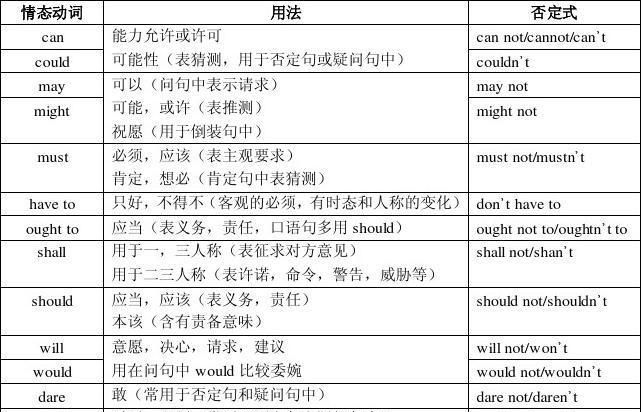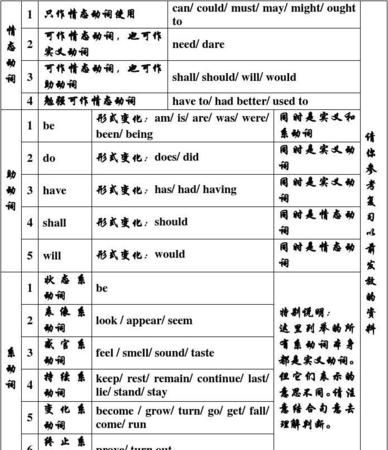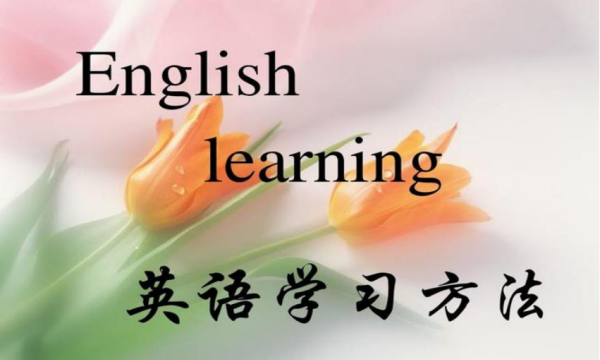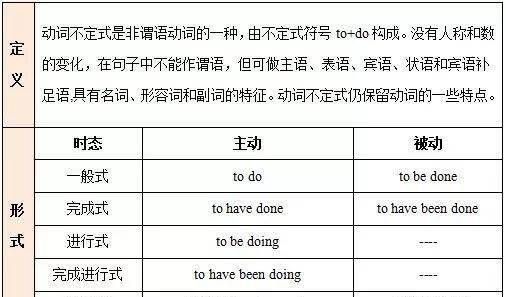本文目录
初中英语感官动词的用法
学好了动词,就相当于学好了英语。的确是这样,英语动词在初中阶段可谓举足轻重。那么接下来给大家分享一些关于初中英语常用的动词用法,希望对大家有所帮助。
初中英语常用动词用法:
1. allow sb. to do sth. 允许某人去做某事
My father allowed me to go out for a walk after finishing my homework.
2. asked sb. (not) to do sth. 叫某人做事某事(叫某人不要去做某事)
My father asked me to study hard.He asked me not to swim alone.
be asked to do sth. 被叫去做某事/被邀请去做某事
I was asked to have a dinner with them yesterday.
3. be afraid to do sth. 害怕做某事She is afraid to ask me questions.
4. be afraid of doing sth. 害怕做某事I am afraid of going out at night.
5. be afraid of sth. 害怕某物He is afraid of snakes.
6. be amazed to do sth. 对做某事感到惊讶He was amazed to meet the girl there.
be amazed at sth. 对某事感到惊讶they were amazed at the news
7. be busy doing/with sth. 忙于做某事 (常考)
e.g: I was busy washing my car at that time. 那时候我正忙于清洗我的车子。
I am busy with my work.
8. be coming/going/leaving/flying/moving/dying(某些位移动词用进行时态时表将来)
the bus is coming/the dog is dying.
9. be excited to do sth. 对做……感到兴奋
Jacky was excited to travel there by plane.
be excited at sth.
Lily was excited at his words.
be excited about doing sth.
he was excited about passing the exam without going overing books.
10. be frightened to do sth. 害怕去做某事
Sam is frightened to ride a horse.
11. be glad/happy to do sth. 高兴去做某事
she is happy to clean the blackboard with me.
be pleased to do sth. 高兴做某事
she was pleased to help the old man yesterday
be pleased with sth. 对某事感到高兴/满意
the teacher was pleased with my answer.
12. be interested in sth./doing sth. 对某事感兴趣/对做某事感兴趣
she is interested in swimming in the river.
My brother is interested in Chinese.
13. be/get ready for/to do sth.Be ready for sth. 为某事做好了准备
We are ready for the exam.Be ready to do sth. 为做某事做好了准备
We are ready to have a birthday party for her.
get ready for sth.为某事在做准备
We are getting ready for the exam.
13. be sorry to do sth. 对做某事感到抱歉
14. be surprised to do sth. 对做某事感到惊奇
be surprised at sth. 对某事感到惊奇
15. be worth doing sth. 值得做某事 (worth 后接动词-ing形式,常考)
16. begin to do sth.begin/start to do/doing sth.
17. can/be able to afford (to buy) sth. 有能力购买(供)……
18. can/may/must do sth. could/would/should/might do sth.
19. can't wait to do sth. 迫不急待地去做某事
20. decide to do sth. 决定去做某事
make up one's mind to do sth. 下决心去做某事 (常考)
make a decision to do sth. 对做某事作出决定
21. deserve to do sth. 值得/应该做……
22. encourage sb. to do sth.鼓励某人去做某事
23. enjoy doing sth. 乐意去做某事
24. expect (sb.) to do sth. 期望去做某事
25. fail to do sth. 做某事失败succeed doing sth. 成功做了某事
26. finish doing sth. 做完某事(后接动词-ing形式) (常考)
27. follow sb to do sth. 跟随某人去做某事
28. get sb. to do sth.make sb. do sth.let sb. do sth.
29. get/have a chance to do sth.得到一个做某事的机会
30. give/pass/show/lend/sell sb. sth./ sth. to sb.buy/get/bring sb. sth. / sth. for sb.
31. go on to do sth. 继续做事(常考)
go on doing sth. 继续做事(常考)
32. hate to do/doing sth. 讨厌/不喜欢做某事
33. have fun doing sth.
34. have problems doing sth.做某事遇到困难
35. have sb. do sth.have sth. donehave sth. to do 有事要做
36. hear sb. do sth. 听到某人做某事(后接动词原形,常考)hear sb. doing sth. 听到某人正在做某事(常见)
37. help to do sth. 帮忙做某事help sb. (to) do sth. 帮助某人做某事
38. hope/wish to do sth. 希望做某事wish sb. to do sth. 希望某人做某事
39. I t seems that 这像是……(后接从句)seem to do sth.seem +adj.
40. It's + adj.+(for sb.) to do sth.
It's + adj. +(of sb.) to do sthe.g: It's glad for him to hear the news.
41. It takes sb. some time/money to do sth. 花费某人多长时间做某事(常考)
42. pay …for…costspend…on…..it take …to do sth.
43. It's best for sb to do sth.. 对某人来说做某事是最好的
had better do sth. 最好做某事 (注意had没有时态和人称的变化,better后接动词原形)
44. It's time for sb. to do sth. 是某人做某事的时候了
45. keep (on)doing sth. 坚持做某事(常考)keep sb. doing sth. 让某人做某事(常考)
keep sb. from doing sth. 阻止某人做某事(常考)keep sb./ sth. +adj.
keep the book for 2 days 借这本书两天(不要用borrow或lend)
46. learn to do sth. 学做某事learn sth. from sb. 向某人学习
47. like to do/doing sth. 喜欢做某事like sb. to do sth. 喜欢某人做某事
48. need to do sth.need doing sth./to be doneneed sth .needn't do sth.
49. prefer to do sth. rather than do sth. 宁愿……而不愿……(常考)
prefer doing sth. to doing sth. 喜欢做……胜过做……
e.g: I prefer reading books to going shopping. 比起购物来,我更爱读书。
prefer to do sth. 喜欢(爱)做某事
50. refuse to do sth. 拒绝做……
初中英语动词固定搭配:
1. want to do sth. 想要做某事
I want to buy a new computer this afternoon.
我想今天下午买台新电脑。
2. would like to do sth.想要做某事
I would like to invite you to come to my birthday party this Saturday.
我想邀请你这周六来我的聚会。
3. wish to do sth. 希望做某事
I wish to live on the moon one day.
我希望有一天在月球上生活。
4. help to do sth. 帮助做某事
I often help to do some chores at home.
我在家经常帮着做家务。
5. hope to do sth. 希望做某事
I hope to have a good rest this weekend.
我希望这周末好好休息一下。
6. learn to do sth. 学会做某事
He finally learned to play the piano with the help of the teacher.
在老师的帮助下,他最终学会了弹钢琴。
7. manage to do sth. 设法做成某事
They managed to escape the fire yesterday.
昨天他们设法逃脱了火灾。
8. offer to do sth. 主动提出做某事
Never offer to teach fish to swim.
别在强人面前逞能。
9. plan to do sth. 计划做某事
He plans to travel around the world.
他计划要周游世界。
10. afford to do sth. 负担得起做某事(时间或金钱方面)
We can’t afford to go abroad this summer.
今年夏天我们没有足够的钱 出国 。
11. agree to do sth. 做某事
He agreed to do it at once.
他同意立刻行动。
12. arrange to do sth.安排做某事
I arrange to wash clothes tomorrow morning.
我安排好明天上午洗衣服。
13. ask to do sth. 要求做某事
The boy asks to go to school by bike.
这个男孩要求骑自行车去上学。
14. beg to do sth. 恳求做某事
He begged not to be put into prison.
他祈求不要被关进监狱。
15. care to do sth. 愿意/喜欢做某事
16. choose to do sth. 选择做某事
He chose to believe what she had said.
他选择相信她说的话。
17. decide to do sth. 决定做某事
She has decided to travel all over the world.
她已经决定周游世界了。
18. demand to do sth. 要求做某事
19. determine to do sth. 决心做某事
He determined to learn French.
他下定决心学习法语。
20. expect to do sth. 等待做某事
I am expecting to hear from you soon.
我期待着早点收到你的来信。
21. fear to do sth. 惧怕做某事
She fears to live on the mountain.
她害怕住在山上。
22. prepare to do sth. 预备做某事
They prepared to go hiking this Sunday.
他们准备周日去远足。
23. pretend to do sth. 伪装做某事
She pretended not to see me.
她假装没有看到我。
24. promise to do sth. 答应做某事
I have promised to give the children some books.
我已经答应给孩子们一些书了。
25. refuse to do sth. 拒绝做某事
She refused to buy a new cellphone for her boy.
她拒绝给她儿子买新手机。
初中英语常用动词注意事项:
一、主动表被动的情况
1. 感观系动词,look, seem, sound, feel, smell, taste等
eg. The fish tastes nice.
2. measure, weigh等表示度量的动词。
eg. The elephant weights nearly a ton.
3. wash, clean, open, sell, read, last, write, steer等不及物动词可以表示被动意义。eg. The ship steer easily.
二、被动句表示主动含义。
She was dressed in a red skirt.
此类动词常见于dress, seat, devote, adapt, accustom 等后面可以接反身代词的动词。
二、时态,语态
1. 用进行时表示一种情绪。
She is always helping others.(表赞扬)
The man is always smoking in the office, which offends others very much.
2. 一般过去时表示某一动作已完成,过去进行时表示动作可能未完成。
He wrote a letter yesterday morning.(信已写完)
He was writing a letter yesterday evening. (信可能还未写完)
3.现在完成时可表示动作持续至今,一般过去时则表示动作已结束,并不强调对现在造成的影响或结果。
I have lived in this street.(我一直住这条街上)
I lived in this street.(我曾住在这条街上)
4.表示几个连续动作时,尽管有先后,仍要用相同时态。
He came into the classroom, put down the book and wrote a few words on the blackboard.
5. 在条件和时间状语从句中常用一般时表示将来。
6.叙述过去发生的某件事情常用一般过去时,表示过去某个时间或动作之后发生的事情才用过去将来时,过去某个时刻/段内正发生的事情,才用过去进行时,过去某个时间或动作之前发生的事情才用过去完成时。因此找准时间的参照点,是正确运用时态的关键。
7.罗列并熟记各种时态的被动形式。
三.动词的类别与特征中的注意点
1.兼作Vt., Vi.的动词
(1)对兼作Vt., Vi.的动词,要注意根据不同的情况选择使用。
The children are flying their kites in the square.( Vt.)
We saw a plane flying high up in the sky.( Vi.)
(2)有些动词后跟从句时为Vt., 其它 情况为Vi.,但意义基本不变。典型的有wonder, think, insist, agree,等。
The headmaster insisted that the students should wear school uniforms .
The headmaster insisted on the students wearing school uniforms.
(3)有些动词在Vt. Vi.之间,意义有所不同。如run, stand, lie等
She stood alone under the tree.
I can’t stand such cold weather.
2.常用的双宾动词有give, teach, lend, bring, explain, send, offer, pay, sell, buy, tell, show, write, ask, wish, read等,这些动词都带有一定的趋向性。因此转换成带介词的情况时,常可用for , to 来转换。
注意:explain sth. to sb.=explain to sb. sth., describe sth. to sb.=describe to sb. sth.
3.带宾补的动词,注意宾补的逻辑主语是动词宾语
宾补常是名词、形容词、介词 短语 ,副词和非谓语动词等。常见的此类动词有make, have, let, get, keep, find, see, feel, notice等,但要注意不同的动词有不同的接法。
He kept the children (keep不能用不定式作宾补)
Make…do, have…do/doing/done,get…to do/done, find…doing/done, leave…to do/doing/介词短语/a./ad., see…doing/do/done
4.后面常接-ing的动词及短语:suggest, finish, avoid, can’t help, mind, need, enjoy, require, postpone, delay, practice, fancy, excuse, pardon, advise, consider, deny, admit, endure, escape, miss, appreciate, dislike, have a good time doing, put off, call off, give up
5.有些动词后面接to do 和-ing时意义基本相同,而有的则完全不同,要注意
Love, like, hate, forget, remember, stop, begin, start, continue, prefer, regret, intend, mean, want, need, require, neglect, try, deserve, can’t bear等
6.注意状态动词和动态动词的选用
Mother asked the son to notice his manners at the party. (notice就改为mind)
再如:listen/hear, look/see, look for/find, advise/persuade, marry/be married, join/be in等。
7.注意have表“有”时,及系动词一般不能用进行时态。
8.注意表示“有”时,have与there be 的选用
9.注意动词词组分类(见<零距离>),尤其要注意各类动词词组的使用特点及有的动词词组的主被动转换使用。
Make use of sth→sth is made use of(介词不要掉了)/use is made of sth.
10.Hope, intend, expect, plan, want, think, mean 等动词用过去完成时表示没有实现的愿望,计划,打算等
初中英语常用的动词用法相关 文章 :
★ 初中英语动词的知识点总结
★ 初中英语动词知识点:Be动词定义及用法
★ 初中英语常用词组有哪些?以及它们的用法是?
★ 初中英语中的常见语法
★ 初中英语语法专题代词与常用动词
★ 初中英语必须掌握的19个重点语法知识点
★ 初中英语情态动词的用法归纳
★ 初中英语动词短语大全
★ 初中英语语法专题动词语常用短语

英语动词的分类及用法怎么区分
动词一般就是用来表示动作或状态的词汇。在英语中,动词按作用和功能主要分为两大类,一类是谓语动词,另一类是非谓语动词。英语动词还可以分成英语动词、连系动词、助动词、情态动词等几类。
英语动词可分成4类
1. 实意动词:大家可以这样去想,实意动词就是你看到、听到、说到到这个词,你会联想到一个“动作”,比如:look,会想到目光的聚焦或移动;eat---咀嚼和吞咽;run---撒开腿跑动;think---一副沉思的模样等等。
2. 连系动词:起到连系主语和表语的作用,有的老师也称之为“系动词”,像一纽带,把主语和表语“系”在一起。如:He is tall. 中的 is;You look tired. 句中的 look;It seems right. 中的 seems;sounds great 中的 sounds 等。
3. 【重点】助动词:理解“助动词”的关键在一个“助”字,助就是帮忙的意思,帮谁?帮实义动词。为啥帮?因为英语的“形合”属性,说通俗点,就是英语是动词在形式上很讲究,助动词的作用就是帮助句中的实义动词---又叫主动词---表现出“时和数”的概念。例如:
Do you like dogs? 中的 do,表明问的时间是--“平时”,主语的数--不是单三。
Did you like dogs? 中的 did,表明问的时间是--“过去”,实义的动词的过去时不讲究数,就没有反映数的单或复。
助动词并非只有 do 极其变化,will、can、is 都可以作助动词用,因为“助动词”是句子中实意动词的得力助手,所以助动词的形式变化是英语学习者必须掌握的重点!
4. 情态动词:上面说到 can ,情态动词也算助动词,只是其功能比较特殊,它们的作用是帮助主动词完成“情态含义”的表达。所谓“情态含义”不是一种动作,而是诸如“能、也许、将要、必须”等,情态动词的特点是--后面的动词不能变。
英语分及物和不及物动词
1、及物动词(Transitive Verb),缩写为:vt. 后面可以直接加人或事物。但是有些词既是及物又同时是不及物,意思也有微妙的变化。
例如最常见的:Like,
可以说是: I like you. 我喜欢你
也可以是: I do not like to swear. 我不喜欢话/ 我不想/我不愿意说脏话。
2、不及物动词(Intransitive Verb),缩写为: vi.,后面要加特定的介词才能加人或事物。若要跟宾语,必须先在其后添加上某个介词,如to,of ,at后方可跟上宾语。具体每个动词后究竟加什么介词就得联系动词短语了
延伸到“系动词”:
1)状态系动词:用来表示主语状态,只有be一词,例如:He is a teacher.
2)持续系动词:用来表示主语继续或保持一种状况或态度,主要有keep, rest, remain, stay, lie, stand, 例如:He always kept silent at meeting.他开会时总保持沉默。
3)表像系动词:用来表示“看起来像”这一概念,主要有seem, appear, look, 例如:He looks tired.他看起来很累。
4)感官系动词:感官系动词主要有feel, smell, sound, taste, 例如:This kind of cloth feels very soft. This flower smells very sweet.
5)变化系动词:这些系动词表示主语变成什么样,变化系动词有become, grow, turn, fall, get, go, come, run. 例如:He became mad after that.自那之后,他疯了。
6)终止系动词:表示主语已终止动作,主要有prove, turn out, 表达“证实”,“变成”之意,例如:The search proved difficult.搜查证实很难。

英语动名词的用法总结PPT
英语动名词的用法总结如下:
一、动名词的构成同现在分词。
1、直接加ing。
2、去掉不发音的e加ing。
3、双写结尾辅音字母加ing。
注:要满足重读、闭音节、结尾是一个辅音字母、辅音字母前是一个元音字母这些全部条件才能双写加ing。
4、tie、die、lie把ie变y加ing。

二、能带动名词作宾语的动词和短语初中有以下:finish、enjoy、mind、practice、consider、suggest、imagine、avoid等。短语主要是一些动副短语和系形短语。如give up、keep on、put off、be busy doing、be worth doing等。还有一些动宾短语如have fun doing、have trouble/difficulty(in)doing等。总结如下口诀便于记忆:
完成练习值得忙(finish,practice,be worth,be busy)。
继续习惯别放弃(keep on,be used to,give up)。
考虑建议不禁想(consider,suggest,can’thelp,feel like)。
喜欢思念要介意(enjoy,miss,mind)。

英语短语动词四种类型的用法总结
同学们认真学习,下面是老师对短语动词的四种类型知识总结。动词与介词、副词等构成的`固定短语,叫短语动词。主要有四类:
一、动词+副词
有的一般不跟宾语,如go ahead, fall behind, get up, lie down, go up, run out, give in, stay up等;有的可以跟宾语,如put out, carry out, give up, wake up, check in, eat up, fill in, find out, fix up, hand in, mix up, look up, make out, turn down, work out等。
注意:宾语是名词时,放在副词前面或后面都可以,但若作宾语的是人称代词时,就只能放在动词和副词之间了。如:
We’ve decided to put the meeting off (=put off the meeting) . 我们决定把会议推迟。
We’ve decided to put it off. 我们决定将它推迟。(不说put off it)
二、动词+介词
如ask for, care for, call for, break into, deal with, call on, look for等。后面必须接宾语。如:
I don’t care for tea. 我不喜欢喝茶。
三、动词+副词+介词
如look forward to, put up with, looked up to, go in for, go along with, date back to, look down on, keep up with, add up to, run out of等。如:
She soon caught up with us. 她很快赶上了我们。
四、动词+名词+介词
如take care of, pay attention to, make use of, make contribution to做出贡献等。如:
Take care of your brother while I am away. 我不在的时候,你要照顾好你弟弟。
希望上面老师对短语动词的四种类型知识的讲解学习,同学们都能很好的掌握,相信同学们会学习的很好的哦。

以上就是关于英语动词的用法归纳,初中英语感官动词的用法的全部内容,以及英语动词的用法归纳 的相关内容,希望能够帮到您。

